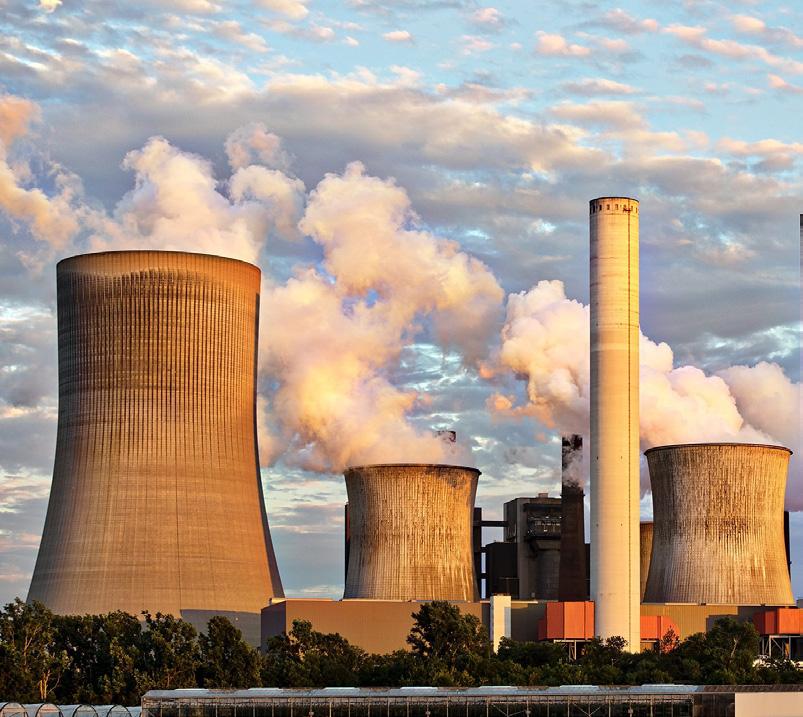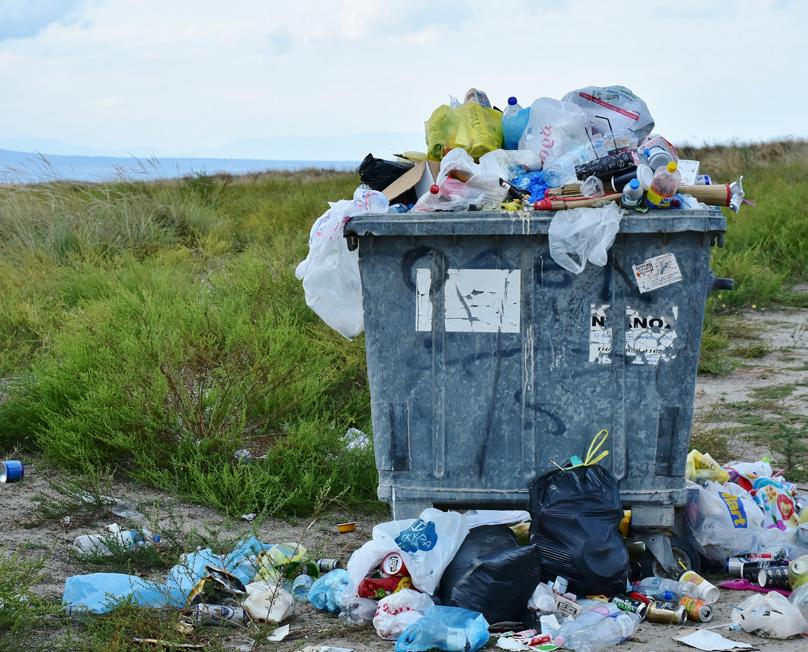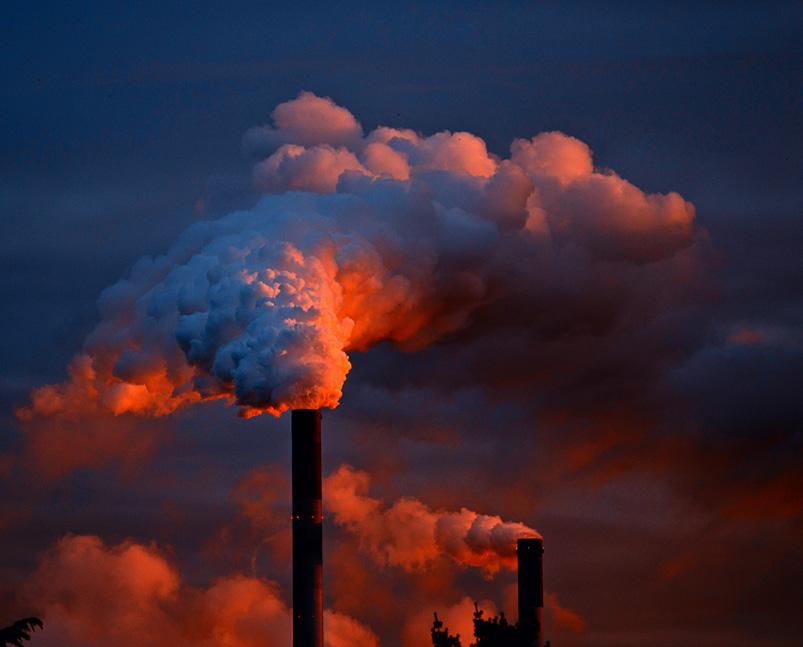
9 minute read
Clean energy and climate stalilization will
Clean Energy and Climate Stabilization will be a Huge Job Creator
as the Economy Rebounds
The current global crisis due to the fast-spreading and deadly Covid-19 has brought a halt to most of the large operations that were fuelled by fossil fuels in most parts of the globe. The halting of these operations has, in return, led to a significant reduction in carbon dioxide and other emissions into the atmosphere, such as greenhouse gas emissions. However, the reduction in emissions has resulted in a cleaner and less polluted atmosphere, which is evident, as shown by recent NASA satellite images of China. The images show that emissions in China have dropped by about 25% due to the lockdown implemented in its major cities as a public health measure.
The NASA images are a perfect representative of what the future could look like if powered by clean energy. The images also prove that it is possible to achieve climate stabilization if we embark on using clean energy to fuel our daily activities. The fight for clean energy and climate stabilization has been going on even before the coronavirus hit the world. The previous fight to stabilize the climate through the use of clean energy has always proved to be in vain. It took a global pandemic for the world to realize that it is possible to stabilize our climate. Our leaders only need to come together and fix a few flaws, with one of the flaws being the massive use of fossil fuels.
Several individuals, such as Tom Steyer, have been in the frontline in the efforts to come up with clean energy sources to replace the use of fossil fuels. Steyer is a wealthy former hedge fund manager who turned into a climate change activist. Steyer later run for a presidential nomination under the Democratic Party with a progressive platform comprising of eliminating global warming emissions through massive investments in clean energy. In recent times before the pandemic, the use of clean energy had already picked momentum. It was already a major source of employment to thousands of people in the U.S. But with the current economic situation, the story is changing. In March alone, the clean energy sector has laid off more than 100,000 employees countrywide including 20,000 individuals from California. However, on a normal occasion, clean energy sector employs more people that the fossil fuels sector. A report by the E2 shows that clean energy has outnumbered fossil fuel workers in a ratio of 3:1.
Recently, Steyer was engaged in an interview with the L.A Times, concerning how the ambitious clean energy programs might help
California and the US at large, recover from the damage brought by Covid-19. In the interview, Steyer was asked about the role he saw clean energy investment and climate stabilization would play in getting the economy back to thrive. He responded “We’ve always known that moving to a green and sustainable economy is a huge job producer. In California, it has already been a huge job producer…. But I think across the United States of America, the country is going to do a huge rebuilding program, and those are investments that will be in place for a long time.”
Steyer, who is also co-chairing a task force on Business and Job Recovery by the California governor, was also asked how much more could California do with investments in clean energy and climate to get the economy moving again? His response was, “I don’t want to prejudge where we come out as a task force. And in any case it’s going to be the governor who ultimately decides what we actually put into effect. We’ve already got very ambitious goals in terms of when we’re going to be carbon-neutral, 2045.” In the interview, Steyer also expressed his hopes and emphasis on the need to take action instead of just mere plans to achieve a more sustainable California.
Recent economic research has shown that setting up and running clean energy plants is actually way cheaper than running existing fossil fuel sources such as coal plants. The research further predicts that by the year 2025, almost all existing coal plants in the U.S. will be very costly to run as compared to building new wind and solar plants.
In recent times, the need to stabilize the global climate through the use of clean energy has been gradually rising among any organizations and states in the U.S. A Clean Jobs America report by the E2 states that in 2018, the fastestgrowing job providing sectors in 12 states were in clean and renewable energy. The report also states that clean energy is also the fastestgrowing source of electricity generation, with California being the front most. This report resulted in speculation by the U.S. Bureau of Labour Statistics that clean energy will be a top job provider by 2026 with solar installers and wind technicians being the most hotcake positions. the efforts towards transitioning to clean energy in most parts of the globe came to a standstill as all resources are now focused on fighting this deadly virus. Many factories have been temporarily closed down as others reduce their workforce by more than half due to reduced operations.
Once the world is through with the current crisis, it is speculated that the fight to a stable climate will continue its course. The clean energy industry will be expected to resume its operations, and more jobs will be available in the industry. The industry is expected to play a significant role in recruiting a good number of people who lost their jobs during the Covid-19 crisis.
On the other hand, many organizations and states will begin to pursue their transitioning into using clean energy due to its numerous benefits both to the economy and the climate at large. During this transitioning, there will be a lot of available niches that people can pursue both for economic benefits and to create a stable climate for ourselves and future generations.
Works Cited
https://www.forbes.com/sites/ energyinnovation/2019/04/22/renewableenergy-job-boom-creating-economicopportunity-as-coal-industry-slumps/ https://www.latimes.com/environment/ story/2020-04-21/why-tom-steyer-cleanenergy-investments-key-to-rebuilding-america https://atlanticcouncil.org/blogs/new-atlanticist/ the-implications-of-the-coronavirus-crisison-the-global-energy-sector-and-theenvironment/ https://www.weforum.org/agenda/2020/03/ clean-energy-coronavirus-crisis/

In Addressing The COVID-19 Pandemic, Congress Mustn’t Exacerbate Climate Crisis

On April 22 every year, the world comes together in unison to mark Earth Day. Earth Day is a celebration that is geared towards appreciating our planet as well as continue creating awareness for environmental protection. This year’s Earth Day marked the 50th anniversary of the celebration. Usually, people would go out to the streets and conduct peaceful demonstrations with posters and placards bearing environmental and climate protection messages. But this year, the celebration was not done as usual due to the outbreak of a global pandemic that has forced people to remain at their homes. This year’s celebrations were done online as the movement continued through the #ClimateStrikeOnline hashtag.
The world is currently experiencing two global crises at the same time, which is climate change and Covid-19. The responsible global communities have stepped up to fight these two global challenges with their main focus being the deadly Covid-19. Governments, individuals and businesses have also embarked on a course to change their behaviours and take healthy measures to contain the situation.
Individual governments have the obligation to protect their nation against any harm and this includes protection from environmental harm. To adhere to this obligation, every state in the US has recently been implementing measures that will help in the fight against the coronavirus pandemic. But one thing we should keep in mind is that as much as we have a life-threatening pandemic, there is one that is a threat to the world right now and to the future generations; this is climate change.
As a way to combat the deadly Covid-19, the US government has allocated a total of $2 trillion to the Coronavirus Aid, Relief, and Economic Security Act (CARES Act). The funds were only allocated to help in the fight against the spread of Covid-19. The $2 trillion CARES Act, however, does not allocate even a single dollar to support the clean energy sector as well as to continue supporting the climate change policy. This means that Congress is not supporting climate action in any way during this pandemic. As if that is not enough, the chairperson of the House Select Committee on the Climate Crisis on March 16, 2020, released a statement on the postponement of the planned release of the comprehensive climate policy recommendations. This move, she said, was due to the spread of the pandemic that needed more attention.
In other news, the US Environmental Protection Agency (EPA) had earlier established environmental protection policies that were set to eliminate or at least reduce all forms of pollution through





emissions. The policies required organizations to stop air and water pollution by available means such as transitioning to use of clean energies. However, to the surprise of everyone, EPA recently suspended the environmental policies amid the Covid-19 global crisis.
The suspension of the policies means that manufacturers and other polluters are allowed to go against the set laws as long as they base their violations on the impacts of Covid-19. EPA claimed that the current crisis has made it challenging for organizations and other businesses to protect its workers and the public in general from Covid-19 while at the same time adhering to the set environmental laws.
Coronavirus, according to research, is a flu-like illness that attacks the respiratory system mainly the lungs. Americans who live in the cities are often exposed to air pollutants such as emissions from vehicles and other machines. These emissions with time, end up weakening the respiratory systems of many of the Americans who live in the cities. The outbreak of a virus that attacks the respiratory system means that many Americans who live in the cities are the most vulnerable when it comes to contracting the virus as their respiratory systems are already compromised. The Congress and the US government, in general, is ignoring this fact when they fail to support the climate change policy during this period. Instead, the government ought to understand that dealing with the two crises at once will be like a double-edged sword that will cut both sides and help in fighting Covid-19 while at the same time taking action towards the climate crisis. The Congress should borrow some examples from Europe who are also in a similar crisis but are not ready to loosen the climate action measures that were there before. A European leader had raised a concern to abandon the climate action measures during these times of crisis. In response to the concerns, a EU spokesperson stated,
Although there has been a significant drop in emissions during this crisis period, the Congress should focus on implementing more environmental policies that will prevent the previous pollution from going back to how it was once things get to back normalcy. Congress should aim to address both the Covid-19 and climate change crises simultaneously to prevent further damages to human health.
Works cited
https://www.weforum.org/ agenda/2020/04/climate-changecoronavirus-linked/ https://www.greentechmedia.com/ articles/read/does-climate-changestill-matter-in-a-pandemic https://www.theguardian.com/ environment/2020/mar/27/trumppollution-laws-epa-allows-companiespollute-without-penalty-duringcoronavirus.










